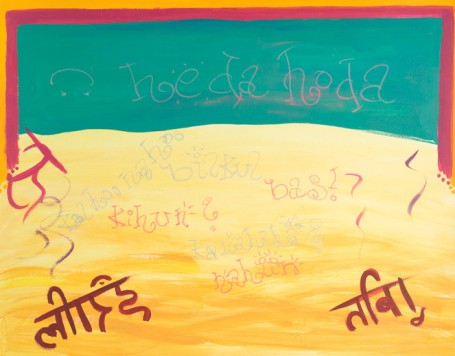Information in English
.
Psychiatric-psychotherapeutic treatment for children and adolescents
Medical Child Psychotherapy is an implementation of child and adolescent psychotherapy as a multimodal child psychological programs provided by an interdisciplinary team supervised by medical specialists for child psychiatry. This treatment center is developed according to current scientific knowledge of research in psychotherapy and psychological therapy. This form of therapy is called multimodal child therapy, due to the use of different therapeutic modalities available through various therapeutic modules in this center of treatment of children and adolescents, the Sozialpsychiatrie-Praxis Berlin.
Networking and joint use of the best possible approaches and therapies that contribute to problem solving is the basic idea of multimodal child therapy.
Different settings, different treatment methods and the expertise of different professional groups can be combined to optimize the treatment efficiency:
-
- In the therapeutic setting, the individual child or young adult is working with a therapist. Labor issues can be tests, discussions, exercises, role play or work of artistic expression.
-
- In a group setting the therapeutic techniques are applied in a group of several children. The response of peers increases the therapeutic processes.
- The family therapeutic setting has the interaction between family members in mind. Psychoeducation has the goal to improve the handling of problem behavior.

Heda Hoda, Rebecca Hanusch
The treatment team of a modern children’s therapeutic center is generally composed of specialists in child and adolescent psychiatry, child psychotherapists, social workers, psychologists, art therapists and possibly other specialized therapists as music therapists, dance therapists, occupational therapists, speech therapists and educational therapist.
The medical management of such a center allows that the patient can be clarified best about differential diagnosis and, if necessary, at the same time, the prescription of medicaments can be used for supporting psychotherapeutic techniques. Many studies prove that indication-oriented psycho-pharmacological interventions often increase the effect of psychotherapeutic measures significantly.
An important principle of modern children’s therapy is to increase the autonomy of the child. Therefore, all recommended treatment should be closely coordinated with the patient and the custodial representatives, because only when all parties are convinced of the correctness of the recommended measures canbe developped the full effectiveness of the therapy. Particularly in the regulation of drugs is it essential to respect the patient’s perspective . If drugs are not necessary or no chance of success is by medication, or when patients refuse medication, the proposed therapy for the children and adolescents can be carried out without medication. Modern children’s therapists suggest alternative treatment options and try new ways how to organize the solution of the problem and how to continue the therapeutic process, even, or especially when resistances occur. 
Therapy consists of the entirety of the interventions, the therapeutic relationship with a therapist who accompanies the patient continuously from the first meeting in the diagnosis phase over the other treatment modules, is of particular importance. The individual therapeutic module offers a broad range of psychotherapeutic techniques waiting to be applied. Children generally have difficulties to get in touch with repressed memories, that is why art therapy methods work particularly well. In modern child treatment centers, the therapeutic skills are based on problem-specific with theupdated scientific standard. Optimal results can be achieved especially if the different treatment modules, so individual therapy, group therapy and possible prescriptions are used long enough. To a large extent a stabilization of a infant mental problem can be achieved in the course of about 3 to 5 years, in many cases, so that there is no further need for treatment anymore.
-
.
Multimodal Therapy for children and adolescents
Art in child and adolescent psychotherapy
Center for Psychiatry and Psychotherapy in childhood and adolescence, Berlin / Germany
Social Psychiatry
History of “Sozialpsychiatrie-Praxis”
Medical psychotherapy for children and adolescents
-
.
-
Consultations in English language are possible.
-
.
-
International translations of this website by Google Translators
.
.
.
.
.
.
.
.
.
.
